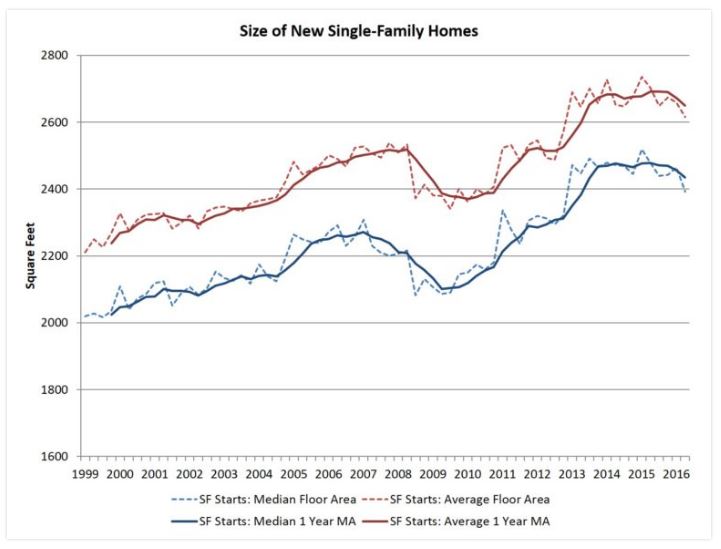 The HUD/Census Bureau residential construction report for July 2016 brought good news as far as housing starts, which exceeded expectations.
The HUD/Census Bureau residential construction report for July 2016 brought good news as far as housing starts, which exceeded expectations.
July may have seen an uptick in the number of new single-family homes being built—but these houses appear to be getting smaller, according to the Census Quarterly Starts and Completions by Purpose and Design report for Q2.
The Census report, combined with analysis from the National Association of Home Builders (NAHB), found that the median average square floor area declined from 2,465 square feet to 2,392 square feet from Q1 to Q2 and the average size of a newly constructed single-family home fell from 2,658 to 2,616 square feet for the same period.
“This change marks a reversal of the trend that had been in place as builders focused on the higher end of the market during the recovery,” said Robert Dietz, NAHB Chief Economist. “As the entry-level market expands, including growth for townhouses, typical new home size is expected to trend lower.”
 Since cycle lows and on a less-volatile one-year moving average basis, the average new single-family home size has risen to 2,659 square feet (more than an 11 percent increase) and the median size has spiked to 2,435 square feet (an increase of 16 percent), according to Dietz.
Since cycle lows and on a less-volatile one-year moving average basis, the average new single-family home size has risen to 2,659 square feet (more than an 11 percent increase) and the median size has spiked to 2,435 square feet (an increase of 16 percent), according to Dietz.
Why those increases from cycle lows if the median size and average size declined from Q1 to Q2 in 2016? According to Dietz, the post-recession increase is consistent with historical patterns following a recession. The pattern has been for the size of new homes to decline before and in the middle of a recession while homebuyers’ budgets get smaller; then the size of single-family homes rises as more high-end buyers (who do not face the same budget constraints) return to the housing market in large numbers.
“This pattern was exacerbated during the current business cycle due to market weakness among first-time homebuyers,” Dietz said. “But the recent small declines in size indicate that this part of the cycle has ended and size should trend lower as builders add more entry-level homes into inventory.”

 theMReport.com Your trusted source for mortgage banking news
theMReport.com Your trusted source for mortgage banking news








